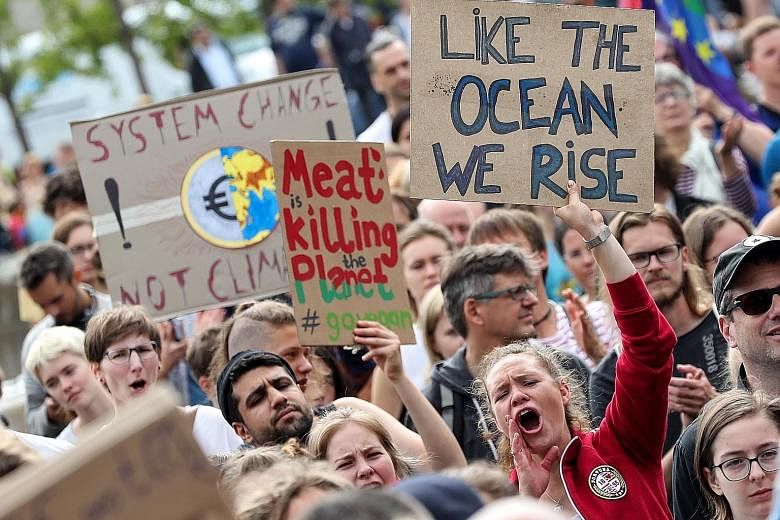Many of the world's major cities will face sharply different climates by 2050, with those in the tropics such as Singapore and Jakarta facing conditions they have never experienced before, including more intense rainfall and extreme droughts, researchers say.
Cities are on the front line for climate change impacts, such as rising sea levels, heatwaves, droughts and threats to food security.
Half of the planet's population lives in cities and by 2050, little more than a generation away, three in four will live in urban areas, says the United Nations.
Singapore is boosting its defences and resilience. Last week, the Government announced it will pump $400 million over the next two years into upgrading and maintaining drains, and channel $10 million into studying sea level rise. These are just two of many measures meant to guard against a multitude of climate threats.
Researchers at ETH Zurich university in Switzerland wanted to find a way to visualise how climate change will affect major world cities. They chose 520 cities and examined the current climate for each, and then ran computer simulations for what the climate would be like in 2050.
The result is that the climate in 2050 for most cities shifts, in some cases dramatically.
London's climate resembles Barcelona's to the south. The Spanish city has longer, warmer summers and milder winters but is also prone to prolonged droughts. Seattle's climate becomes milder, resembling San Francisco's current climate, Moscow becomes more like Sofia, and Paris like Canberra.
Across Europe, summers and winters will get warmer, with northern climates becoming more like those in the south, the researchers found. The results were published earlier this month in the journal Plos One.
"All the cities will become drier," said the lead author, Dr Jean-Francois Bastin of ETH Zurich.
"Cities in the tropics tend to shift to the subtropics, with longer dry seasons," he told The Straits Times. More extreme rainfall events are likely, increasing the risk of flooding and therefore the need for better drainage.
Dr Bastin's team built up a picture of cities' current climate by selecting 19 climate variables centred on rainfall and temperature. The variables reflected seasonal differences, for example, rainfall in the driest and wettest months and maximum temperatures during the warmest months.
The team then projected the future climate by using a series of existing computer climate models and taking an average of the findings. They used an optimistic assumption, which is that carbon dioxide emissions would stabilise by the middle of the century, based on technology and policy solutions to cut emissions.
They found 77 per cent of cities in 2050 were very likely to experience a climate closer to that of another city. And 22 per cent "of the world's cities are likely to exist in a climatic regime that does not currently exist on the planet today".
About two-thirds of these are in the tropics, including Singapore, Kuala Lumpur, Jakarta, Yangon and Manaus in Brazil.
But Dr Bastin explained that the shift to new climate conditions in the tropics might not be extreme.
Singapore's climate is already getting hotter. The hottest days exceed 34 deg C, compared with an average of 27 deg C in the 1960s.
To boost climate science research on the tropics, Environment and Water Resources Minister Masagos Zulkifli last Wednesday said Singapore had "taken the initiative to lead" through the work of the Centre for Climate Research Singapore.
Sea level rise was also a major threat, he said.
"Climate change sets us a monumental, inter-generational task - how to ensure that our Little Red Dot does not disappear below the waves."


